Text
Week 15 – Final Thoughts
The future of design is a complicated concept which will affect everything and everyone. However, I do see some design shifts happening currently that have the potential to change the trajectory of the design forever.
For example, Haliade-X is a wind turbine which was developed and designed by General Electric Renewable Energies company, and is being manufactured for offshore wind energy harvesting. This is a groundbreaking feat of design, engineering, and development. The turbine is 853 ft tall, about ¾ the height of the Empire State Building in New York. One rotation of its 722 ft rotor can power a home for two days. Because of its size, it is less sensitive to variation in its power production capabilities due to wind conditions, aka it is a far more consistent machine than smaller turbines. This miracle of engineering is the future of green energy, and will be the blueprint for which more advanced future designs will emerge from.
Another example is General Motors new Ultium Flexible Global Platform battery technology, which will assist in its expansion of its Electric Vehicle portfolio. The technology is currently in use on the manufacturers Cadillac Lryiq luxury SUV, Chevrolet Bolt EV, Chevrolet Bolt EUV, Hummer EV, and 12 more future models. General Motors has partnered with Honda to produce future electric vehicles for both manufacturers.
My third example is our regained interest in space travel, specifically when it comes to traveling to the Moon and Mars. Human kind has always dreamt of the stars, and we have never been closer to colonizing another planet. Shackleton Moon base is a concept which is aimed at being completed by 2028, and is part of the current Armetis. Project Armetis will be a collaboration between NASA, U.S commercial space flight companies, ESA (European Space Agency), Canadian Space Agency, JAXA (Japan Aerospace Exploration Agency). There will be an army of robots sent to the moon in order to construct a Moon base, which will be created from regolith in order to protect from radiation. This will require a whole new level of design work, and move us into the next era of human civilization.
0 notes
Text
Week 14 - Your Choice
Living through such a historically significant part of the 21st century has been a catalyst for much experimental thinking. When it comes to design thinking, it is interesting to look at the past and analyze the ways in which humanity has been impacted by previous pandemics. For example, let's go back to 1918, when the Spanish Flu, also known as the Influenza Pandemic first began. It had only been about three decades since Germ theory had been accepted in the sciences. This theory sparked the creation of many different relating fields, such as bacteriology. With this increased knowledge came increased public understanding of these ideas, and so sparked the fear of germs.
Bathrooms and kitchens are by far the most impacted rooms of our homes when it comes to consideration of bacterial contamination and ease of cleaning. For example, the half bath originated as a method of keeping guests in a home from using the facilities used by the individuals who live in the home. The half bath was popularized in the late 1910’s as the influenza pandemic surged across the world, and forever impacted the expectations we have of proper modern homes. The items inside of these bathrooms also changed; from clawfoot tubs to chamber pots, there are many design changes that have been made in the name of cleanliness, they have moved away from wood and plaster, and moved onto tile and porcelain.
During that same time, the tuberculosis pandemic continued to rage. For tuberculosis in particular it was widely believed that sunlight and fresh air would assist people in recovery of the sickness. This has profoundly impacted our perceptions in the modern day, with large, airy, and bright spaces seeming safer and healthier. The international style of design and architecture is perhaps the most prominent example of how we’ve developed as a world, appearing with large windows and clean open spaces.
This leads me to write about today. It is difficult to determine how our design world will change and shift as Covid-19 continues its ravage. We will be here to witness our shifting world at a critical time, and we need good design to help us cope with the world we find ourselves in.
0 notes
Text
Week 13 – New Media
In the book, “Graphic Design: A New History,” digital aesthetic is directly defined as “The digital aesthetic that has been so prevalent in recent years first emerged in video-game graphics, which have had an enormous impact on the field of graphic design by popularizing a smooth, exuberantly colorful, and futuristic texture-less style” (Eskilson 408). This definition is extremely efficient in its explanation of digital aesthetic, and provides good historical context for our current understanding of digital design work.
Expanding upon this definition, there is an excellent amount of historical and current digital aesthetic in past and present Apple operating systems. When the iPhone first debuted in 2007, the goal of its user interface was to familiarize users with its touchscreen technology. This is made obvious by its use of skeuomorphism, with richly textured design elements that begged to be touched by the user as if they were buttons. Many of the original iPhone’s icons represented real life objects with similar functions. This aesthetic was very efficient at its job. However, as trends in digital aesthetic leaned towards simplification and minimalism, two-dimensional digital design with a lack of texture became standard practice. Even the design of the iPhone user interface has replaced texture with vibrant solid colors and gradients. This evolution exemplifies the changes in digital aesthetic that have happened since the digital revolution began decades ago.
Another fantastic example is Google. Founded in 1998, Google’s website first used skeuomorphism heavily in its branding and search bar buttons. This, again, was to familiarize its users with an interface. However, the company has since moved on to flat imagery that reflects current tastes in its digital aesthetic.
Both Apple and Google have helped further pave the way for flat digital aesthetics. These flat aesthetics stemmed from video game graphics, but they can be seen in a variety of applications today. The concepts birthed by these early digital graphics continue to be developed and have a long life ahead of them.
0 notes
Text
Week 12 – New Media
Interactive design is a very wide field, but is fully enveloped within new media, as it fully relies on our modern interactable digital technology and the internet. Interactive designers can often be app designers, website designers, or really any designer that works within internet based media.
As a profession, web design seems to be one of the largest and most prominent displays of Interactive Design work that would be generally interacted with by most people. Websites have become the main method of interaction between people and businesses, especially when it comes to personal matters and individual contact. From banking, to buying shoes, almost anything can be done using a website. In the case of a website, there is a tremendous opportunity for Interactive designers to connect to their audiences and produce a fantastic connection between the consumer, and anything that needs representation. Organizing, prototyping, and predicting user behavior are only some of the skills that interactive designers need to be successful at. In observing older websites vs. their newer versions, it is easy to see that Interactive designers have been pioneering since the beginning, constantly needing to involve new features and consumer demands as well as meeting their visual and interactivity expectations.
Video game designers must also be included as a large section of influential designers, as a modern video game such as Grand Theft Auto V would require an extraordinary amount of competence and understanding of interactivity when it comes to a user interface. Something like a video game is entirely reliant on the interaction of the user and the design framework functioning as the user expects it to. It is impossible to dismiss the incredible advancements that have been made in the creation of video games, from graphical to interactable engines behind the games themselves. This advancement is displayed most notably in the usage of modern intractable frameworks in vehicle displays, such as the usage of the “unreal engine” to display interactable graphics in the dashboard of the new Hummer Electric Vehicle.
0 notes
Text
Week 11 – Graphic Design
The citizen designer is a concept that distances itself from the narrow daily occurrences of a designers day job. Formally trained designers traditionally lend their skill set to a company, client or branding. These jobs are often inconsequential to anything overly serious, and typically lead to small changes that go near unnoticed by the average consumer.
The average consumer is not specifically targeted by a Citizen designer; rather, a citizen designer will more likely be targeting a large scale issue that is not typically confronted in commercial lines of work. A “citizen designer” can be defined as “a professional who attempts to address societal issues either through or in addition to his or her commercial work”. These ideas can be traced back to the Arts and Crafts movement, and its leader William Morris’s ideals. Morris is quoted as saying that “high quality design could serve as a beneficent social force to reform the ills of the Industrial Age” which I believe to be one of the best explanations of citizen design.
These ideas are more relevant now than ever before. Never before has the Earth, and the beings on it, been threatened so existentially. Never before has the Democracy of the United States been so internally threatened. All of these problems are amplified by the global connectivity enhanced by modern technology; with billions speaking out for what they believe in, there is a sense that many social issues cannot be ignored or bypassed. Therefore, the need for citizen designers has never been greater, and the justification for such work has never been clearer. This is very visible in today’s society and corporations' gradual embracing of societal and global issues as part of marketing and commercial activity. Going forward, it is expected to be more necessary of a job for designers to address the issues at hand. Our ideals will always be something we aspire for, and good citizen designers thinking radically is a weapon we have in confronting global issues.
0 notes
Text
Week 10 – Graphic Design
During my readings from the textbook relating to typography, there was much information to absorb and an abundance of historical explanations for the way we see text in the modern day. Some of this reading had to do with the developmental stages of typography, culminating in the bulk of the text, which explained the evolution of De Stijl, Russian Constructivism, Bauhaus and the Swiss style; it then continued on to inform the reader about the International style, its historical precedents, and how they led to its development as a globally accepted and inclusive style.
The most interesting idea that I discovered while reading was the culmination of many styles and developments that led to International Style. International style refers to the development of Swiss style outside of Switzerland. Swiss style is not inherently native to Switzerland or the Swiss peoples, as it was mainly inspired by Bauhaus, and is often thought of as a continuation of the German Avant-Garde movement, which ended abruptly as World War II broke out across Europe. It makes sense that this German artistic, typographic and architectural development would find its home in neutral Switzerland, as they had next to no involvement in a war, therefore becoming a safe haven for many peoples, bringing with them their cultures and ideas. Bauhaus itself is heavily inspired by Russian Constructivism, which ended during the power struggle of Russia, when it transformed into the USSR.
Therefore the most interesting concept from this reading is assessing how many roadblocks were in the way of our modern conceptualizations about design, architecture, and text. International Style had been in the making for decades, surviving multiple wars, revolutions, and hugely influential world events. However, the roots of it were able to jump from nation to nation, and eventually transform into the international, becoming the world standard for communication in every single element of our modern lives.
0 notes
Text
Week 9 - Industrial Design
Milwaukee fits nicely into the profession of Industrial Design; as one of the most influential cities in the United States at the time Milwaukee served as a manufacturing capital, which provided huge amounts of industry fulfilling the needs of a growing and technologically advancing American consumer base. Having dropped out of college and promptly working for multiple businesses as an inventory manager, he has experience with real world applications of his skills, and therefore develops an understanding of things that could be improved. This comes into play when working as an industrial designer, since all of the work is focused on consumer use and the experiences people have with products, materials and packaging.
Stevens most likely stayed in Milwaukee because he was familiar with the city, and it was an intrinsically happy place for him to stay and grow as an artist; less intense than other major cities, more familiar, and on its way up as a whole.
Milwaukee therefore provided a solid backdrop for his practices, and a continuously growing economy assisted him in his practice, with more demand and few prestigious firms in the Midwest. His work is much appreciated nowadays as being that of an individual who helped create Industrial Design into what it is now.
0 notes
Text
Week 8 – Industrial Design


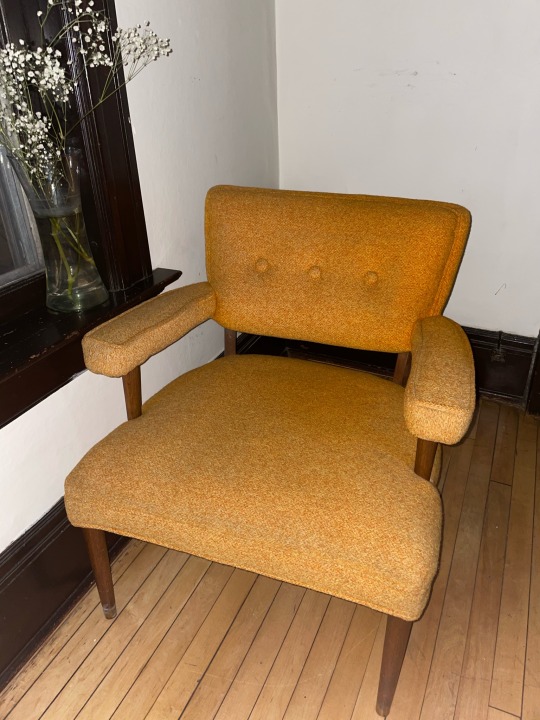





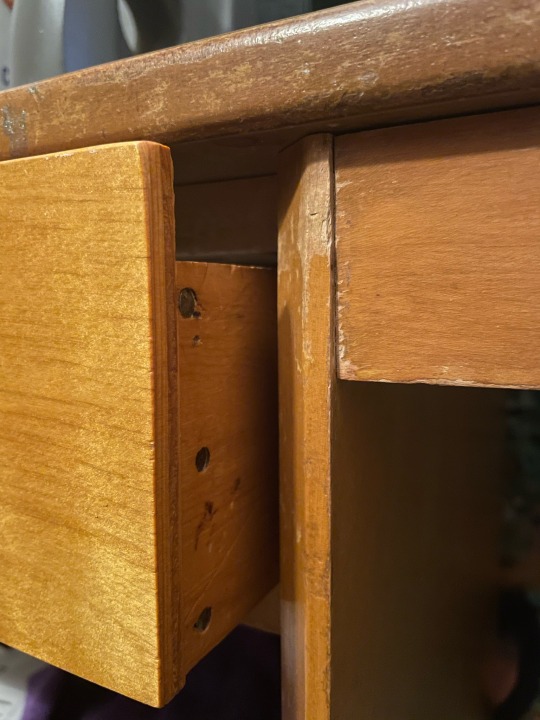

1) Backpack, designed to hold items and keep them secure.
2) Shoes, Designed to be walked in and durable
3) Chair, designed to be sat in, but connecting to mid-century styles and tastes.
4) Lamp, designed to be a light source, and to disperse light in a certain way.
5) UWM hat, designed to be worn on the head.
6) Brass duck bookend, shown as designed holding up books from falling over.
7) Complex air tight piping, designed to allow water to flow through.
8) Radiator, designed to heat a room in a stylistic way.
9) Drawer opened, drawer designed to be opened and closed
10) Power cord, designed to charge an electronic device.
0 notes
Text
Week 7 - Architecture
Milwaukee, and cities in general are designed completely around the needs of human beings. However, this does not mean that everything in a city is compatible with our current understanding of how design should function in an urban setting. Most construction throughout the built environment of Milwaukee aims to fulfill all universal elements of design.
A great example of equitable use in my built environment is the width of the sidewalks, and the care that is taken to continuously ensure they are maneuverable to all people, no matter their physical situation. There are painted and textured ramps at each intersection which may need to be used by pedestrians, and these intersections are often very visible to drivers so that there are no surprises when it comes to people in the street. At busier intersections there are pedestrian lights and audio warnings to alert pedestrians as to when it is safe to cross, and for how long it is safe to do so. This makes these intersections and crossings accessible to the visibly and physically impaired, as well as making it safer for everyone in general, and keeping foot traffic organized.
Size and space is used interestingly in the city of Milwaukee, and is probably one of the biggest benefits of living in the city. Milwaukee is absolutely full of park space and natural environments which are intentionally left untouched, therefore becoming part of a greater design. This is especially noticeable when looking at the park space between the boulevard street of Newberry; from Riverside Park to Lake Park there is a solid connection of enjoyable open space and shaded grassland. In the warmer months, it is easy to tell how well appreciated this connection between parks is, and there is a constant bustle of Milwaukeeans enjoying themselves.
0 notes
Text
Week 6 – Architecture
Architecturally, Milwaukee has a wonderful mix of structures from many distinctive decades of architectural design. The duplex is a great example of Milwaukee architecture. Much like the brownstones of Chicago, the Milwaukee duplex is a great example of how density can affect the types of structures that are built in the close suburbs surrounding a city. Unlike Chicago brownstones, which typically also serve as duplexes, the majority of duplexes and homes in east Milwaukee are made of wood, and were often built during the first decade of the 20th century. These duplexes and homes in the dense near suburbs offer an interesting look into the city, as the architectural styles of these homes are diverse yet meld together fantastically.

Urban expansion during the first half of the 20th proved to be an extremely important time for Milwaukee. The population at the beginning of the 1900’s was 285,315, with the city reaching its peak of population of 741,392 in 1960, being the 11th largest city in the United States. All of this growth and increased influence as an industrial and nationally recognized city allowed Milwaukee to achieve architectural feats that the city can still hold dear, and some of which it cannot. In saying this I am speaking about two great buildings that were the product of massive growth and showcased Milwaukee’s new found status as a nationally recognized power city. The Milwaukee Lake Front Depot building, built in 1889 and destroyed in 1968 as it was in the path of highway construction, was a well known and appreciated structure. The building was directly associated with the wonder of entering Milwaukee, as it served as one of the city's largest transportation hubs. This Renaissance Revival style building was forever lost, and serves as one of the best examples for the protection of historically significant buildings.
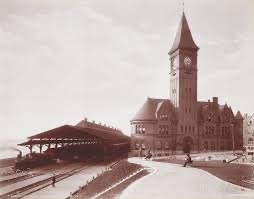
The Milwaukee City Hall was built in 1895, and still serves as the city hall of Milwaukee. This building is also a fantastic example of Renaissance Revival architecture in Milwaukee. This building has seen Milwaukee grow and develop into its modern version, witnessing historical events such as the attempted assasination of Teddy Roosevelt, and the Covid-19 Pandemic. It is my hope that Milwaukee will regain a public consciousness about the importance of our historical significance, and the architectural heritage that came from that significance.

0 notes
Text
Week 5 - History of Design
When speaking about the examples of design seen around us on a daily basis, three design examples come to mind; Constructivism, Bauhaus, International Style. All of these design styles saturate the modern day, and have come a long time since their inception.
Constructivism, the earliest design style on this list. More widely known as Russian Constructivism, this style of design is “tied directly to the industrial world” and “Could be approached with logical planning as an engineer”. Constructivism disregarded “speculative philosophy” and “characterized most art including supremacism”. This style of design began its life as a style distinctive of post revolution Russia. The exploration of abstract beauty in the materials indicative of the industrial materials and heavy industry that defined the Russian population of the USSR. (Excerpts taken from p.190-192 Revolutions in Design)

Bauhaus is a design style which has a very distinct beginning. Bauhaus directly translates to “Construction House” and is derived from an art school built and designed under Bauhaus principles, and based in Weimar, Germany. Bauhaus principles are what would go on to become distinctly modernist principles of design. Rooted in Constructivism, the Arts and Crafts Movement and leading to International Style of design, Bauhaus mainly took inspiration from airplane hangars and viewed conventional styles of architecture as “essentially two dimensional”. Bauhaus vowed to change this, and the Bauhaus school of design was built of “industrial materials, and designed as homage to important industry” which is to say it lacked any sort of “superfluous decorative elements”. The most important aspect of Bauhaus design is that it tried not to take anything away from a given work's clarity and readability, exactly the aim of modern design styles. (Excerpts taken from p.212-226 The Bauhaus and the New Typography)


The International Style is one which has become mainstream in the contemporary era. Constructivism inspired principles of Bauhaus design, which inspired the International Style. The differentiation between this style and the older ones that inspired it is the fact that the International Style has a distinct identity. This identity directly corresponds with the rise of multinational corporations and their extreme growth post 1900. These corporations wanted to be “represented by a unified design front to the consumer”. (Excerpts taken from p.286-298 The Triumph of the International Style)

0 notes
Text
Week 4

While out on a long late night walk I passed many buildings and many objects, none of which caught my attention much as this one was able to. When I saw this café sign I was entranced by its ability to turn everything around it a blue tinge, and reflected off of the many closed storefronts on the street. Bright and eye catching, something about this sign drew me closer to it, and captured my attention enough to take the picture above. This signage is clearly fantastic at its job, and reflects the area around it well in an aesthetic sense as well as a logical one. This object has a clear purpose, to catch the eye of the viewer and draw customers into the café. On top of this important job, it allows the owner of the restaurant to have an aesthetic that fits with the identity and personality of the business.
Certainly this object is one of a kind, and made specifically for this café, which in itself is a fantastical thought. This object performs the same job as other, less personalized signage, but adds flair and personality that is important in the context it finds itself in; a quaint beach town surrounded by sand dunes and open ocean. Thinking about the context of other signage helps understand the need for uniqueness in this specific sign. Home Depot for example, has no use for unstandardized and unique signage, which would be confusing and not fitting of a store brand. Uniqueness is not important in that context, and would be a detriment. However, along a bustling main street, this uniqueness can only help to draw in more attention, and produce a beautiful statement about what it is representing.
Another object similar to the sign shown above would be a no parking sign. These objects both aim to draw in the attention of their users, and send a message to them in a simple and straightforward way. These objects are utilized for similar concepts, and designed to fit that need.
0 notes
Text
Week 3 - Ten Observations of Design


Object 1: Drawing of a blue pot
An interesting combination of shapes keeps intrigue while filling the role of containing things
Object 2: Fake flower
Solving the problem of flowers dying!

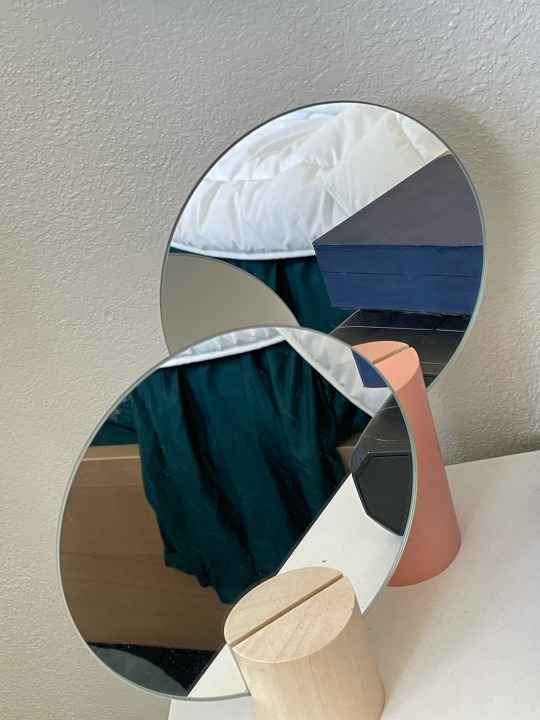
Object 3: Postcard with lavender design
Solving the problem of writing to someone from a certain place or with a certain message
Object 4: Circular mirrors
Solving the problem of being able to see ones self through a medium thats cute

Object 5: Chair
Solving the problem of seating!

Object 6: Air conditioning vent
Solving the problem of a design element being needed for a complicated system of cooling and or heating to function properly
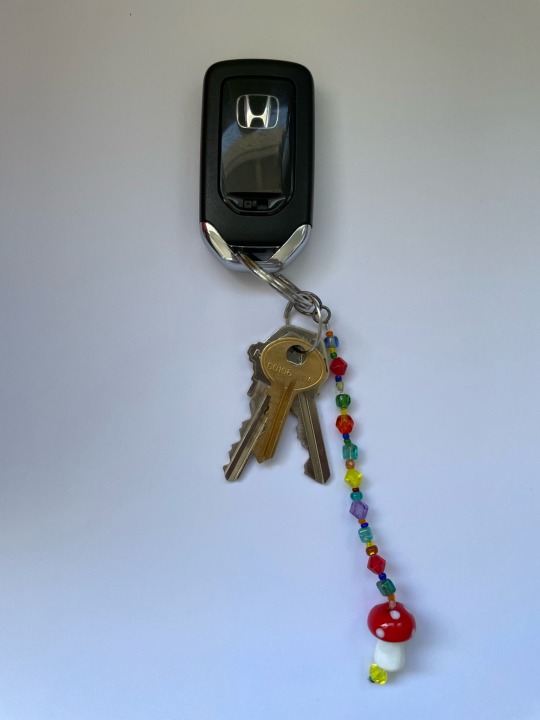

Object 7: Car keys
Solving the problem of starting your car
Object 8: Globe lamp
Solving the problem of being able to see in the dark
Object 9: Wooden electrical transmission pole
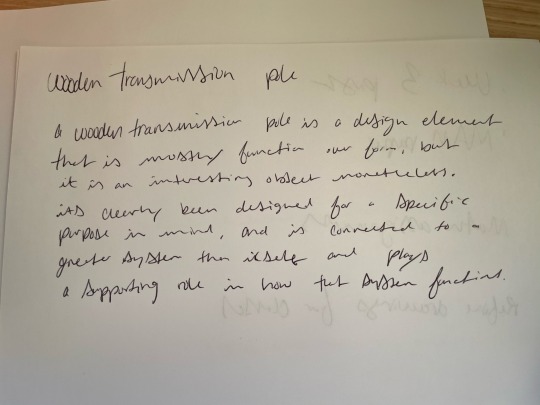
Object 10: Laptop keyboard

0 notes
Text
Week 2 - Design Thinking
After reading the Harvard Business Review’s “Design Thinking by Tom Brown” I have concluded that the most fitting definition of “design” is the process of addressing any kind of problem. Whether it’s the attractiveness of a vehicle helping to draw in more customers, or a prosthetic arm designed to make life easier for its recipient. Design makes life easier for the beneficiaries of said design, like IDEO’s sinus surgery device, or the software designed for knowledge transfer from nurse to nurse. Design is at first rudimentary and then perfected, whether it be through prototyping or redesigning of an object that already exists, such as a shopping cart.
Most products I use every day have large amounts of design thinking behind them; in such a manufactured and human centered world it is difficult to not see design thinking impacting my every day of life. For example, my car has been designed and refined after many decades of observation, such as crash testing. Design thinking is responsible for the safety features in my vehicle, and the overall design of the vehicle as a barrier from harm if an accident were to occur. In the past, vehicles did not have collapsible steering wheel columns, meaning that if a frontal collision were to occur, the steering wheel and its column would strike the driver like a javelin, potentially causing serious harm. However by following the steps of design thinking, and taking a “Human centered approach” described as “direct observation (that) will capture unexpected in-sights and produce innovation that more precisely reflects what consumers want.” as is displayed on page 90 (7 of 10) it is much more likely that a frontal accident will cause only minor harm to the driver in modern vehicles.
Another example would be the iPhone. The first of its kind and the father of all modern communication devices, the iPhone has changed the world with Apple’s ability to identify a market need, and using design thinking surrounding their customer’s daily lives and needs “ Many of the world’s most successful brands create break-through ideas that are inspired by a deep understanding of consumers’ lives and use the principles of design to innovate and build value.” (page 90, Taking a Systems View) perfectly conceptualizes this thought, and underlines what groundbreaking innovations can come out of identifying problems and becoming their solutions. Thank you design thinking!
The most significant concept from this week’s reading is that design thinking does not exactly require an especially creative mind, or really many specifically unique skills at all. Design thinking is a collaborative effort that builds upon itself iteration after iteration. Bankers, strategists, inventors and toilet paper salesmen can all be design thinkers successful in their own rights, and are all key to perfecting products and fitting the needs of consumers.
0 notes
Text
Week 1 - About me
Hello! My name is Duncan Kenny and I am a sophomore here at the University of Wisconsin-Milwaukee. I am very excited for the months to come, especially when it comes to learning more about Industrial design, which is the profession I hope to enter after receiving my degree. Understanding elements of design and distinctions between the subjects contained within general design is important to me, and I hope to gain a wider understanding of design as a concept.
I grew up in Rockton Illinois and Brookfield Wisconsin. I have a twin brother and a wonderful mother. I am very close with my grandparents and have been dating my wonderful boyfriend for almost a year. Recently most of my family has spread throughout the country, giving me nice places to go and stay for vacations and visits! Traveling is one of my biggest goals. I hope one day to live on the west coast, which is somewhere I may transfer to in order to receive my degree, as I have a great affinity to the Pacific Northwest, somewhat due to their culture of preserving cars.
Vehicles, specifically widely available ones, are something that have been an interest of mine for a very long time, especially cars produced by Honda. I have always had a focus on the mundane or otherwise boring objects in life as something to study. I am fascinated with the impact good design has, especially when it has to do with city planning or economy car design, which is something we can all share. For me, good design is synonymous with a healthier and stronger world. My entire world view is built upon the concept of fairness, equity and growth, which is a point I raise only because of its impact on my conceptions of design and the abilities it has to reach wider life goals.
1 note
·
View note